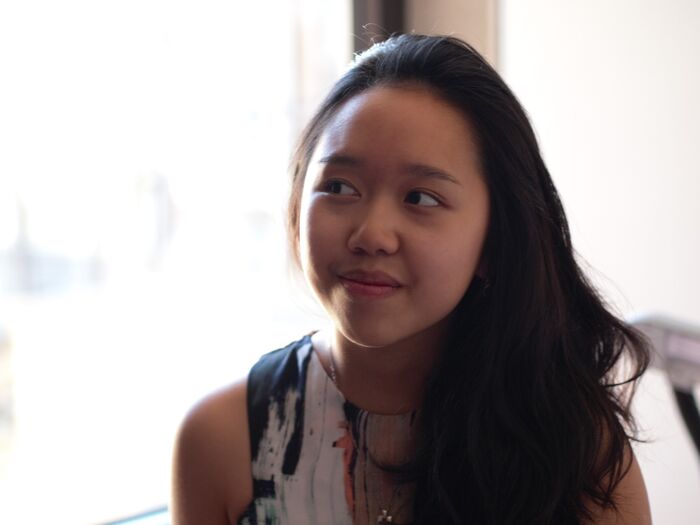Crazy Rich Asians: a win for representation?
Stephanie Chng examines the criticisms of poor representation

For many Asians across the world, seeing Crazy Rich Asians being played on the big screen brings home a connection that is both personal and culturally significant. For us, the film represents much more than the oft-repeated rhetoric of being ‘the first Hollywood film in 25 years to have an all-Asian cast’: it is not a box to be ticked on the diversity checklist, but a platform that validates the (until now) seemingly mundane and insignificant experiences of our daily lives.
As romantic comedies go, the story of Crazy Rich Asians is neither novel nor groundbreaking: when Rachel Chu (Constance Wu) accompanies her boyfriend, Nick Young (Henry Golding) to meet his uber-wealthy family in Singapore, she has to contend with snarky detractors, struggle with issues of conformity, and ensure that she comes out of the battle a winner, having proved herself to be a worthy future wife. This rich boy/ poor(er) girl trope is a tale as old as time, one that can be traced back in various manifestations to Austen’s Pride and Prejudice as well as to films such as Titanic or The Notebook. Fully aware that its mission is not to revolutionise the rom-com genre, Crazy Rich Asians is much more ambitious — it informs the world that such stories also exist for Asians and that it is time for their version of these stories to be heard.
The film has been marred by complaints about Asian representation in the film: with the actors’ largely Western accents and the lack of Singlish (Singaporean English), some have accused it of mere tokenism that does not capture the full spectrum of the Asian experience. It is not hard to miss the clipped and distinctly British accents of Nick and Astrid Leong (Gemma Chan), which stand in contrast only to the American ones of Rachel and Goh Peik Lin (Awkwafina). The Westernisation of the dialogue in the film also creeps in through the lack of localised slang; viewers from Singapore and Malaysia, such as myself, are especially quick to note the lack of beloved discourse particles like ‘Lah’, ‘Leh’ or ‘Lor’ as well as interlingual sentences (commonplace in South-East Asian countries whose residents juggle multiple languages in their daily discourse). Clearly, the Asia being portrayed is a westernised one.
The film opts to signal its recognition of the variety of Asian experiences by adamantly refusing to homogenise them
This is a problem that stems from the over-ambitiousness of the project itself: in trying to represent more than a specific group of Asians — including Asian-Americans, local Singaporeans, Singaporeans who have lived overseas — the film ends up biting off more than it can chew, resulting in its inability to fully examine the intertwining yet distinct experiences of each group. However, to demand otherwise is akin to requiring Brokeback Mountain to represent as many permutations as possible of the lives of same-sex couples.



Far from enriching the message of the film, attempts to represent everyone would only end up a conglomerated mess devoid of any coherent narrative. Instead, the film opts to signal its recognition of the variety of Asian experiences by adamantly refusing to homogenise them, as demonstrated through differing character tics, costumes and cultural motifs. These are presented in a manner that is obvious only to the discerning and attentive audience member, a technique cleverly employed by the film to demand, indirectly, that the audience not take for granted their existing assumptions about what it means to be Asian. One powerful example of this is Rachel’s friend being addressed as ‘Peik Lin’ rather than merely ‘Peik’ without having to hyphenate or join together both parts of her name, a luxury that people with Chinese names do not receive in Western countries (and certainly not in Cambridge).
Where representational problems are concerned, the one prominent weakness of the film lies in its now-much-highlighted focus on the lavish opulence of Chinese economic aristocrats, leading to the 'erasure' of the experience of dark-skinned minorities in Singapore — a depiction that does no favours in addressing the issue of racial imbalance. In fact, the only dark-skinned characters are of secondary importance, such as guards or chauffeurs.
The film was never meant to be the pinnacle of the diversity movement in Hollywood
Nevertheless, one silver lining can be found: in spite of this deficiency, more conversations are now being held about the existence of racial privileges in Singapore, thrusting awareness of this topic onto a global stage. Most importantly, the fact that certain minorities have been left out does not mean that the representation of the Asian-American experience should lose its significance.
It is at this point that we recognise the far-reaching impact of having a film like Crazy Rich Asians. To hold it to an impossible standard of representation is to miss its true significance. The film was never meant to be the pinnacle of the diversity movement in Hollywood; rather, it is merely the first tentative step towards more Asian representation in a world in which their stories have too long been marginalised, stereotyped and made for laughs. The fact that Eleanor Young (Michelle Yeoh) is more than just a ‘Tiger Mother’, or that Rachel Chu is more than just a ‘clever academic’ dispels the usual Hollywood trope wherein Asian characters are cardboard stereotypes rather than complex figures who are irreducible to a single adjective. It is nuances such as this that explain why, for most Asians, the experience of watching the film is triumphant, liberating and cathartic at the same time.
 Comment / Plastic pubs: the problem with Cambridge alehouses 5 January 2026
Comment / Plastic pubs: the problem with Cambridge alehouses 5 January 2026 News / Cambridge businesses concerned infrastructure delays will hurt growth5 January 2026
News / Cambridge businesses concerned infrastructure delays will hurt growth5 January 2026 News / Cambridge academics stand out in King’s 2026 Honours List2 January 2026
News / Cambridge academics stand out in King’s 2026 Honours List2 January 2026 Interviews / You don’t need to peak at Cambridge, says Robin Harding31 December 2025
Interviews / You don’t need to peak at Cambridge, says Robin Harding31 December 2025 News / AstraZeneca sues for £32 million over faulty construction at Cambridge Campus31 December 2025
News / AstraZeneca sues for £32 million over faulty construction at Cambridge Campus31 December 2025










